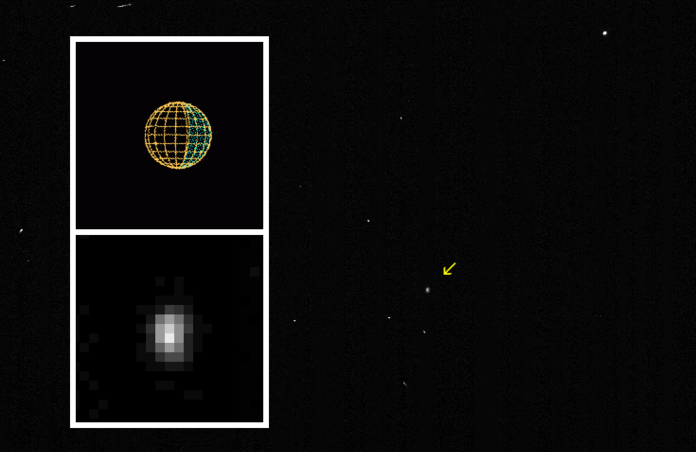Himalia Moon of Jupiter

This month is the 119th anniversary for the discovery of the 6th known moon of Jupiter. Named Himalia in 1975, Jupiter VI was discovered on 3 December 1904, by American astronomer Charles Dillon Perrine [1867-1951], using the Crossley 36-inch reflector at Lick Observatory. After several more observations, the discovery was confirmed the following January. Perrine also discovered Jupiter VII (Elara) in 1905.
Himalia shows a mean radius of 85 km in the JPL Solar System Dynamics database, from ground based estimates. But the Cassini image provides the slightly smaller estimate of 75±10 x 60±10 km. Although dwarfed by the giant Galilean moons, Himalia is the 5th largest Jovian moon, as well as the 6th to be discovered.
As of today, according to the JPL Small Body Database, Jupiter has 95 known moons, while Saturn shows 146! The large majority, for both planets, are less than 10 km (6.2 miles) across.
The image shown here is from the JPL Photojournal collection (see bottom link below), and was taken by the Cassini orbiter as it passed Jupiter on its way to Saturn (31 January 2001). It is, as far as I can tell, the highest resolution image of Himalia that we have.
https://en.wikipedia.org/wiki/Himalia_(moon) (Himalia - Wikipedia)
https://solarsystem.nasa.gov/.../jupite.../himalia/in-depth/ (Himalia, in depth - NASA Solar System Exploration)
https://solarsystem.nasa.gov/.../himalia/by-the-numbers/ (Himalia, by the numbers - NASA Solar System Exploration)
https://ui.adsabs.harvard.edu/.../2016DDA.../abstract (“Himalia and Phoebe: Little moons that punch above their weight” - AAS meeting abstract, May 2016)
https://nssdc.gsfc.nasa.gov/.../factsheet/joviansatfact.html (Jovian Satellite Fact Sheet - National Space Science Data Coordinate Archive)
https://ssd.jpl.nasa.gov/sats/discovery.html (Solar system, planetary satellite discovery circumstances - JPL Solar System Dynamics Group; satellite count is here)
https://ssd.jpl.nasa.gov/sats/phys_par/ (Solar system, planetary satellite physical parameters - JPL Solar System Dynamics Group)
https://www.ucolick.org/public/telescopes/crossley.html (Crossley telescope at Lick Observatory)
https://photojournal.jpl.nasa.gov/targetFamily/Jupiter... (Image source - JPL Photojournal)
